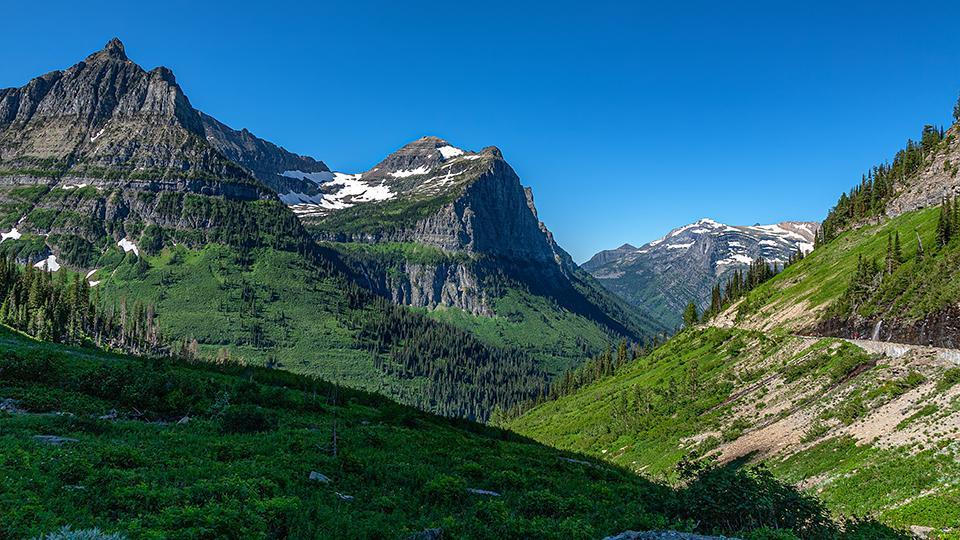
A climate-change adaptation plan released by Interior officials seeks to build climate resiliency into public lands/Rebecca Latson file
Framework for tackling climate change and adapting to its impacts released by Interior Secretary Deb Haaland also seeks environmental justice for low-income and communities of color, clean energy to drive America, and more jobs, good paying jobs at that, in the conservation and climate adaptation sectors.
Interior issued the outline Thursday in conjunction with the administration's release of plans from 20 federal agencies "that outline the steps each agency will take to ensure their facilities and operations adapt to and are increasingly resilient to climate change impacts."
Exactly how that role evolves at Interior remains to be seen; the department is still developing specific guidance for the National Park Service and other bureaus under its purview when it comes to addressing climate-change impacts.
Park Service staff in Washington did not immediately respond to a request for how the agency would integrate the plan into its operations.
But the Interior secretary said the plan is wide-ranging and seeks to deliver "environmental justice, build resilient communities and invest in a clean energy future that can create millions of good-paying union jobs, while protecting the communities, natural and cultural resources on which Americans rely.”
In general terms, the document Haaland released seeks to have Interior:
- Promote Climate-Resilient Lands, Waters, and Cultural Resources
- Advance Climate Equity
- Transition to a Resilient Clean Energy Economy
- Support Tribal and Insular Community Resilience
- Empower the Next Generation of Conservation and Resilience Workers
The plan comes as wildfires continue to rage in the West, including one that has marched north across Sequoia National Park, and as the Southwest's long-running drought leaves lakes Mead and Powell starved for water. Climate change also is producing more frequent and potent hurricanes and tropical depressions that batter areas along the East and Gulf coasts, sea level rise that is impacting areas from the East Coast to coastal Alaska, and slowly vanishing glaciers.
Interior's plan cites some of those impacts:
- For thousands of years, Tribal communities and Alaska Native villages have been living along coastlines and rivers that sustain their livelihoods and needs. However, climate change has been causing increased flooding, permafrost melt, sea level rise, and erosion, causing homes, schools, buildings, and other community infrastructure to fail, succumbing to the eroding riverbanks and coastlines. The warmer waters are causing culturally significant species such as seals, whales, walrus, and salmon to shift their habitat range, threatening food security.
- A changing climate is impacting the health and functionality of the Nation’s watersheds, causing significant changes in water quantity and quality across the country. Temperature increases are resulting in decreased snowpack, differences in the timing and volume of spring runoff, and changes in peak flows in Western United States basins.
- Long-term drought, especially in the Western United States is impacting migratory waterfowl production and creating novel wildlife communities. Changes in water and temperature, ocean acidification, and sea level rise are affecting ecosystem function as marine species change their geographic range.
Part of the work under Interior's plan calls for prioritizing those landscapes, and communities, most threatened by climate change and developing plans that will not just protect them but build in resiliency to climate-change impacts. Another point calls for promoting "landscape connectivity to increase ecosystem resilience and adaptability."
And while Congress is struggling in its efforts to come to terms with a bill that will address the nation's highways, bridges, pipelines and other infrastructure needs, Interior's climate plan calls for an assessment of the "viability of current energy infrastructure to operate in extreme climate conditions, including drought, severe weather, and temperature extremes." That work could lead to new technologies to better protect the infrastructure from climate change, the document said.
Interior's plan also aims to "support climate-resilient investments for tribes and Insular areas..." That work is expected to lead to "expansion of resources provided to Tribes and Insular areas, and engagement in climate adaptation practices."
Finally, it calls for a Civilian Climate Corps that would be put to work mending public lands impacted by climate change, strengthening community resilience to climate impacts, reforesting, protecting biodiversity, and improving recreational access to public lands.



Add comment